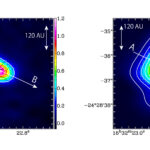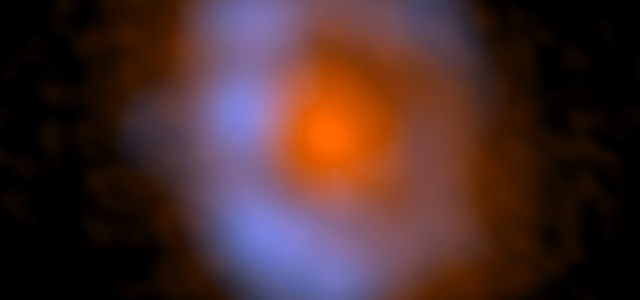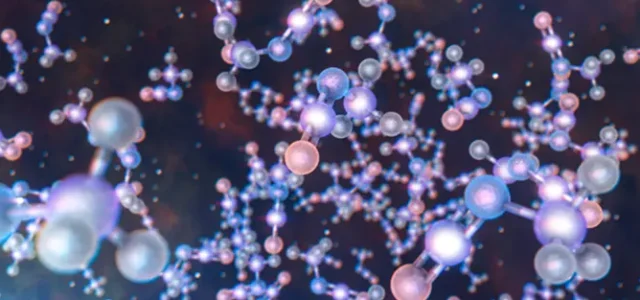Life’s building blocks come from outer space
Read time: 3 minutes
Life is based on carbon chemistry. Without carbon, there would be no plants, animals, or people. Because carbon is so important for biology, all molecules that carry carbon atoms are called organic molecules. Simple organic molecules, like carbon monoxide (CO) and methane (CH4), are the very first building blocks of living organisms.
Organic molecules have been found in the space between the stars. They often freeze on the surfaces of small dust particles. So how do those molecules end up on planets like Earth? New ALMA observations have provided the answer to that question.
A young baby star at a distance of some 420 light-years is surrounded by a disk of gas and dust. The material in this rotating disk will eventually clump into planets. Beyond the rotating disk is a larger cloud of infalling gas and dust. This means that the baby star and its ‘protoplanetary’ disk are still growing from interstellar material.
Using ALMA, a team of astronomers has now found complex organic molecules around the star. The large cloud of infalling material contains molecules of carbonyl sulfide (OCS). The smaller rotating disk contains molecules of methyl formate (HCOOCH3). This shows that organic molecules are transported from interstellar space into planet-forming disks. Apparently, they evaporate when they arrive at the outer boundary of the rotating disk.
Earlier, the same team has found other molecules in a rotating ring around another baby star. This indicated that the chemical makeup of protoplanetary disks can vary from one star to another. The new results will help astronomers to understand the origin of life’s building blocks.
What?

The baby star (or ‘proto-star’) that has been studied is known as IRAS 16239–2422A. It belongs to a large star forming region in the constellation Ophiuchus (the Serpent Bearer), at a distance of some 420 light-years from Earth. The rotating disk surrounding the star is almost as large as our own solar system. By precisely studying the millimeter radiation from methyl formate molecules, the astronomers were able to show that these complex organic molecules are part of a rotating ring.
Who?
The ALMA observations of IRAS 16239–2422A were carried out by a team of astronomers led by Yoko Oya. Yoko is a graduate student at the University of Tokyo. She worked together with colleagues from her own university, from the Japanese RIKEN institute, and from the University of Grenoble in France. The team published their results in The Astrophysical Journal.

ALMA URL



